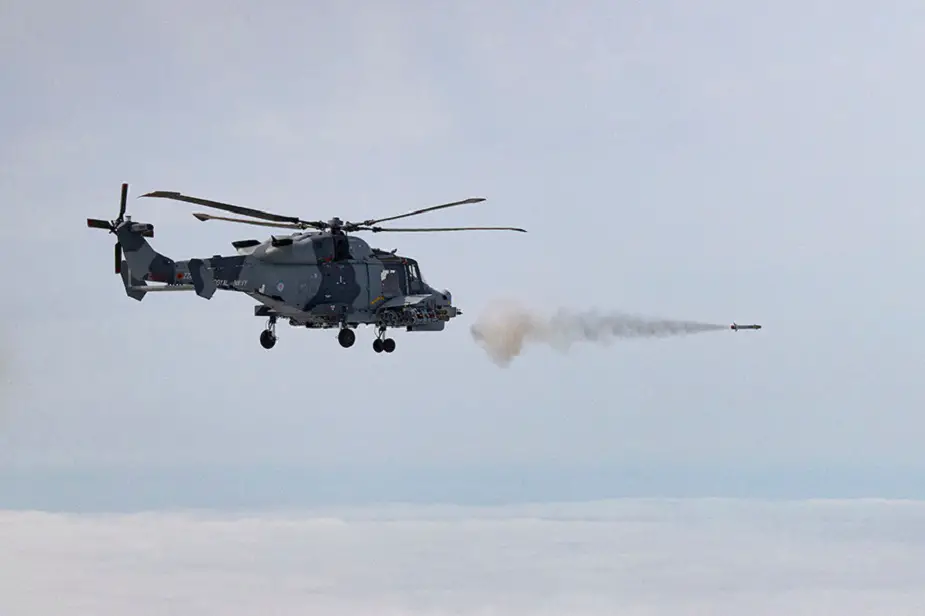Breaking news
UK: Royal Navy tests new Martlet missile system for HMS Queen Elizabeth.
Wildcat helicopters have conducted live firing with the Martlet weapons system, procured by DE&S, for the first time
Follow Air Recognition on Google News at this link
 In 0.3 seconds, the missile detached from the Wildcat HMA Mk2 helicopter, accelerating to one and a half times the speed of sound (Picture source: UK MoD)
In 0.3 seconds, the missile detached from the Wildcat HMA Mk2 helicopter, accelerating to one and a half times the speed of sound (Picture source: UK MoD)
Wildcat helicopter crews have proved a new missile’s ability to protect the UK’s aircraft carriers.
Fired live from Wildcat HMA Mk2 for the first time, the Martlet weapons system procured by Defence Equipment and Support (DE&S) has been successfully tested at MOD Aberporth off the Welsh coast.
Launched from the platform in 0.3secs, the telemetry missile accelerated to one-and-a-half times the speed of sound (992 nautical mph).
This marks a significant milestone in the Future Anti-Surface Guided Weapons (FASGW) programme, which will arm the helicopters that deploy as part of HMS Queen Elizabeth’s Strike Group on its maiden operational voyage next year.
Captain Mark Langrill, DE&S’ Wildcat Delivery Team leader, said: “These firings mark a vital step forward in the integration of the uniquely flexible Martlet missile into what is already an outstanding helicopter to provide the Royal Navy with a world-class capability.
Managed by the Lightweight & Medium Attack Systems (LMAS) and Wildcat delivery teams, Martlet incorporates the versatile lightweight multirole missile (LMM) – developed by Thales in Belfast – soon to enter service with the Navy and Army in the short-range air defence role.
The Martlet missile offers a unique capability to defeat asymmetrical and terrorist threats in the littoral environment, such as Fast Inshore Attack Craft (FIAC), RIBs or even jet skis. The precision laser beam riding guidance concept of LMM and the accurate launcher stabilization has been demonstrated for the first time in a UK MoD Sponsored TDP with several firings from a T23 Frigate off the Pembrokeshire coast at an operationally representative remote-controlled FIAC target. It has a weight of 13kg, travels at Mach 1.5, has a range exceeding 6 km, and an immediate launch capability.
Preparation for the series of test firings was conducted in line with current Government social distancing rules due to coronavirus, adding an extra hurdle for the teams involved to overcome.
Wildcat Maritime Force Commander Matthew Boulind said: “The successful test firing shows the Wildcat helicopter will be ready to help defend our Queen Elizabeth-class aircraft carriers and their strike groups for years to come. “The Royal Navy and Army introduced Wildcat helicopters into service five years ago. The firing of the Martlet today is a very significant milestone and represents a huge success for the joint industry and MOD team.”
The firing was captured with high-resolution cameras so the teams from Thales and Leonardo Helicopters – which manufactures the Wildcat in Yeovil – can analyse the system trials in minute detail.
Martlet has already been successfully launched off the frigate HMS Sutherland, but its primary role will be on-board Wildcat.



















